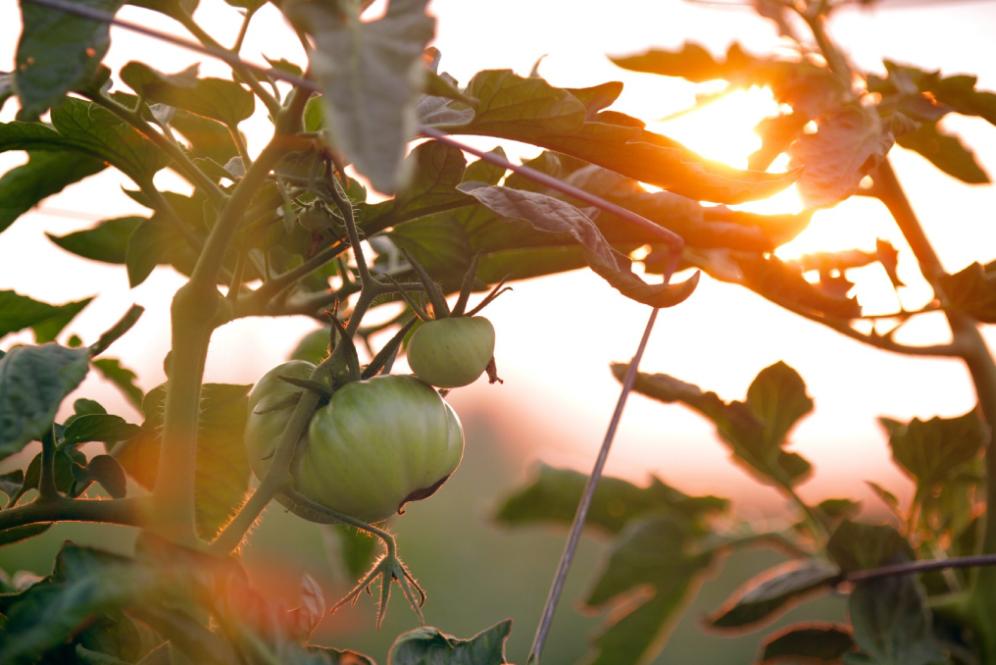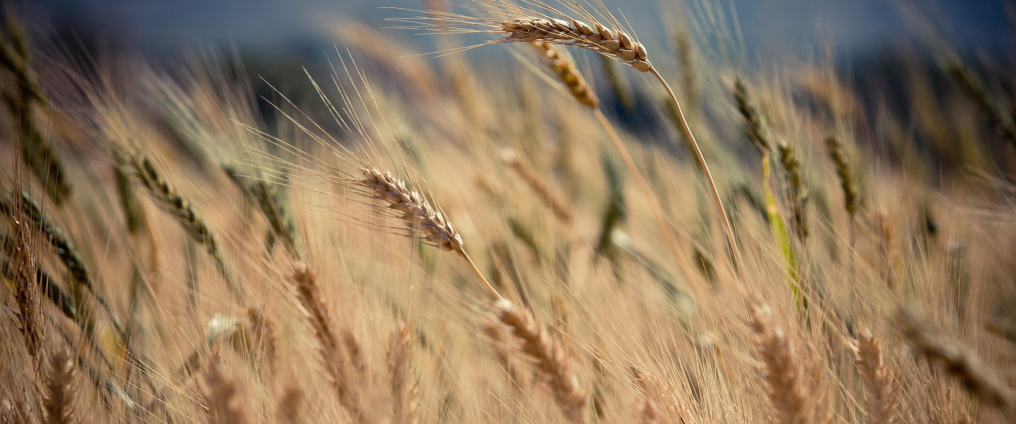Climate, biodiversity, human health. These pressing global challenges are all connected by one vital sector of the economy: food. More than a third of the world’s land is currently dedicated to food production.
How we manage that land impacts levels of greenhouse gases in the atmosphere, whether plants, insects, and animals can thrive, and if people have access to a nutritious diet.
While the current food system has supported a fast-growing population and fuelled economic development, productivity gains have come at a cost. Deforestation for agricultural land as well as livestock and soil management have amounted to the food industry being responsible for almost a quarter of greenhouse gas emissions globally. Meanwhile, mismanagement of fertilisers has caused eutrophication of waterways and chemical pesticide use has degraded the natural resources on which the food system depends.
These practices threaten biodiversity, pollute the environment, and impact our health. For every dollar spent on food, two dollars worth of health, environmental, and economic costs are created. Half of these costs — totalling USD 5.7 trillion each year globally — are the result of the way food is produced and food waste and by-products are handled.
But this can all be turned on its head. The food system can be fundamentally redesigned to actively tackle climate change and biodiversity loss, and promote human health, while reducing the overall costs to society. By reconnecting communities with local food production and changing the way we grow food, design food products, and handle by-products and waste, we can create a circular economycircular economyA systems solution framework that tackles global challenges like climate change, biodiversity loss, waste, and pollution. It is based on three principles, driven by design: eliminate waste and pollution, circulate products and materials (at their highest value), and regenerate nature. for food that provides five key benefits for society and the environment.
1. It regenerates natural systems
In a circular economy, food is produced regeneratively. This improves the overall health of the local ecosystem, promoting good human health and protecting natural habitats.
Regenerative food production identifies a broad set of methods with two clear and complementary outcomes: the production of high quality food and the improvement of the surrounding natural ecosystem. Employing farming techniques such agroforestry and permaculture, regenerative farmers use organic rather than synthetic fertilisers and undertake activities such as rotational grazing, in which the management of animals boosts the productivity of the land, and crop rotation, where a range of crops are grown on the same piece of land across the growing seasons.
Diversity is key. Whether all crops are harvestable or some are grown year-round, crop diversity can provide health, environmental, and business benefits.
A direct product of produce diversity is dietary diversity, which is considered good for our health by nutritionists. Currently, more than 75% of our food comes from a mere 12 plant species and five animal species. Dependence on only a small range of food types has led to concerns about diets being ‘energy-rich but nutrient-poor’, with micronutrient deficiencies affecting at least 1.5 billion people. But there are over 200,000 edible plant species in the world, and growing a range of crops regeneratively is not only good for our health but also for nature.
In the state of New York, High Falls Farm grows more than 100 rare varieties of apple tree from across the world alongside a matrix of other crops, including chestnuts, hazelnuts, mulberries, pawpaws and many perennial medicinal herbs. Such diversity has allowed local insect populations to thrive, benefitting other species throughout the local food chain as a result. It is an example of how regenerative farming techniques build soil health enabling it to provide vital habitats for microorganisms at the start of the food chain — such as fungi and insects, and the animals that depend on them — and hold more water, improving fertility and productivity of the land.
Productive land is good for business. In Japan, farmer Takao Furuno introduced ducks into his rice paddies as an alternative to chemical pesticides and fertilisers. The ducks eat weeds and pests, and deposit their waste on the fields, which improves soil fertility. Through this method, Furuno has increased the rice yields of his farm by 20–50% compared to industrial rice plantations. In addition, the farm now also generates revenue from duck eggs and meat, as well as figs, vegetables and wheat, highlighting that diversifying is also good for business.
2. It combats climate change
A circular economy for food could reduce the sector’s greenhouse gas emissions by 49%, or 5.6 billion tonnes of CO2, by 2050.
By planting cover crops that grow for long periods of time, employing agroforestry, or other regenerative methods that allow for photosynthesis to take place year-round, CO2 is drawn from the atmosphere into the roots of plants and the soil microbes around them. At the same time, allowing roots and stubble from harvested plants to break down on the land returns carbon to the soil, as does use of organic fertilisers made from manure, composted plant by-products, and inedible food waste.
To create organic fertilisers and ensure they are affordable, organic waste flows from our towns and cities can be valorised. Each year cities generate more than 2.8 billion tonnes of organic waste, with only 2% of this currently looped back into the system for use. Acknowledging the potential to use this organic matter to store more carbon in farmland, businesses, governments and other organisations are turning to anaerobic digesters to turn organic waste into compost. From small projects, such as that in Malton, UK, to larger projects like Plant Chicago, US, potential gains are beginning to be realised.
Elsewhere, businesses are aiming to reduce greenhouse gas emissions by designing out edible food waste. Reducing edible food waste by only 50% by 2030 has the potential to reduce annual emissions by 1.4 billion tonnes of CO2 and a number of businesses are already focused on this goal. In Japan, seasoning producer Mizkan has created the brand Zenb — which means ‘all’ in Japanese — turning what would typically be food by-products, including corn cobs, edamame pods and beetroot skins, into food products. In the Netherlands, Surplus Food Factory uses the tops and bottoms of tomatoes not wanted by hamburger producers to make soup, along with other food items that are considered unsuitable for commercial use elsewhere. Chefs, food product developers, and others responsible for designing the products and food that we eat can all contribute to reducing emissions by making more of food.

3. It can improve access to nutritious food
By reconnecting cities with surrounding peri-urban areas, a circular economy for food builds resilience in the food system and improves food security.
More than 40% of the world’s irrigated cropland is located in peri-urban areas, yet the food produced on this land is often flown to consumers on the other side of the world while similar products are imported into neighbouring cities. When global supply chains are disrupted, by events like the Covid-19 pandemic, access to food is jeopardised. But by reconnecting towns and cities with local food production and balancing this with global supply, resilience can be built into the food supply chain so that no matter where or what disruption is faced, food can still be accessed by those that need it. Redistributing surplus edible food could feed one billion people by 2050.
In Medellin, Colombia, the Huertas para el Abastecimiento (Gardens for Canteens) programme allowed for 20 tonnes of food in local areas to be sourced during the first two weeks of the city’s Covid-19 pandemic lockdown. Local producers were supported by the council to distribute their produce through private companies, facilitating supply to popular canteens and ultimately feeding the most vulnerable populations in the city. Similar decentralisation of supply was successful in supporting communities in India, Kenya, and Vietnam.
In China, the UK and the US community supported agriculture (CSA) sales and subscriptions have seen significant growth during the pandemic. CSA connects food producers to each other and to customers, establishing local food networks. In doing this, they provide food security to local communities while also providing smallholder farmers with guaranteed income.
4. It can support local communities
In addition to providing millions of people with food security, a circular economy for food builds resilience in local communities.
Around 70% of all the food we eat comes from smallholder farms, of which there are approximately half a billion globally. As countries become more affluent, more often than not agriculture is industrialised, which threatens the livelihoods of smallholder farmers with possible knock-on effects including depopulation of rural areas. However, by connecting people with local food production, smallholder farms can be preserved, benefitting both their communities and the environment.
Despite providing such a large amount of our food, these farms only use 30% of resources and 12% of the world’s agricultural land. Acknowledging the benefits for both the environment and people, the city of São Paulo has put in place mechanisms that enable the local community of farmers to thrive while providing those in need with locally and regeneratively grown food. To accomplish this, the city has devoted 30% of its territory to smallholder agriculture and the City Hall sources food for school meals and food banks from this area to ensure that those in need have access to fresh fruit and vegetables. The initiative also secures livelihoods for farmers and their families, with the added benefit that the green belt around the city contributes to cleaner air.
Urban-rural relationships like this are increasingly being seen as a priority to build resilience into communities of all sizes. The UN Food and Agriculture Organization (FAO) recently launched the Green Cities Initiative, which aims ‘to increase people’s wellbeing’, with beneficiaries including both city dwellers and ‘stakeholders related to green spaces’. Outlined in the Initiative’s action programme, activities will include connecting producers with local markets, as well as creating innovative agro-processing food hubs and ‘green’ jobs, and advocating for use of local products. Many of the initial target cities are situated in developing regions where developing a circular economy for food could enable smallholder farmers to leapfrog industrial food production.
5. It saves money and creates value
By creating a circular economy for food, annual benefits worth USD 2.7 trillion could be generated for cities by 2050.
By sourcing food grown regeneratively and locally where appropriate, and making the most of food and waste, cities could generate benefits worth USD 2.7 trillion a year by 2050. The city of Brussels, for example, stands to gain over USD 130 million per year by producing 30% of its food locally using regenerative practices, halving food waste, and converting half of all remaining organic waste into high quality compost.
Harnessing organic waste streams, which contain high levels of nitrogen and phosphorus, alone could unlock upwards of USD 700 billion for cities globally, and valorising these streams is already creating new business opportunities. Since 2008, UK-based Agriprotein has been turning food waste into products, including oil, organic fertiliser, and animal feed. Each of its facilities is able to process at least 350 tonnes of waste per day, which is then fed to fly larvae. The larvae are then harvested to create Agriprotein products. In Kenya, Sanergy similarly creates insect-based animal feed and organic fertiliser, this time through collection of human waste. Sanergy provides residents of urban slums with non-sewered sanitation solutions and franchises them to local community members, collecting waste each day to be turned into useful products.
Increasing use of organic fertilisers rather than chemical alternatives also yields health benefits, with the potential to reduce health costs by USD 550 billion globally. Farm worker exposure to pesticides currently costs almost a trillion US dollars and long-term exposure to low levels of pesticides has been linked to cancer, asthma, depression, reduced IQ, and higher rates of attention deficit hyperactivity disorder (ADHD) — the last two alone are costing the EU an estimated USD 150 billion each year.
As the economic benefits of a circular economy for food become clearer and more businesses and policymakers invest in developing the relationships that allow for nutrients to continuously be cycled, the system will begin to work better for all — working with nature to safeguard biodiversity, promote human health, and stabilise our climate.







